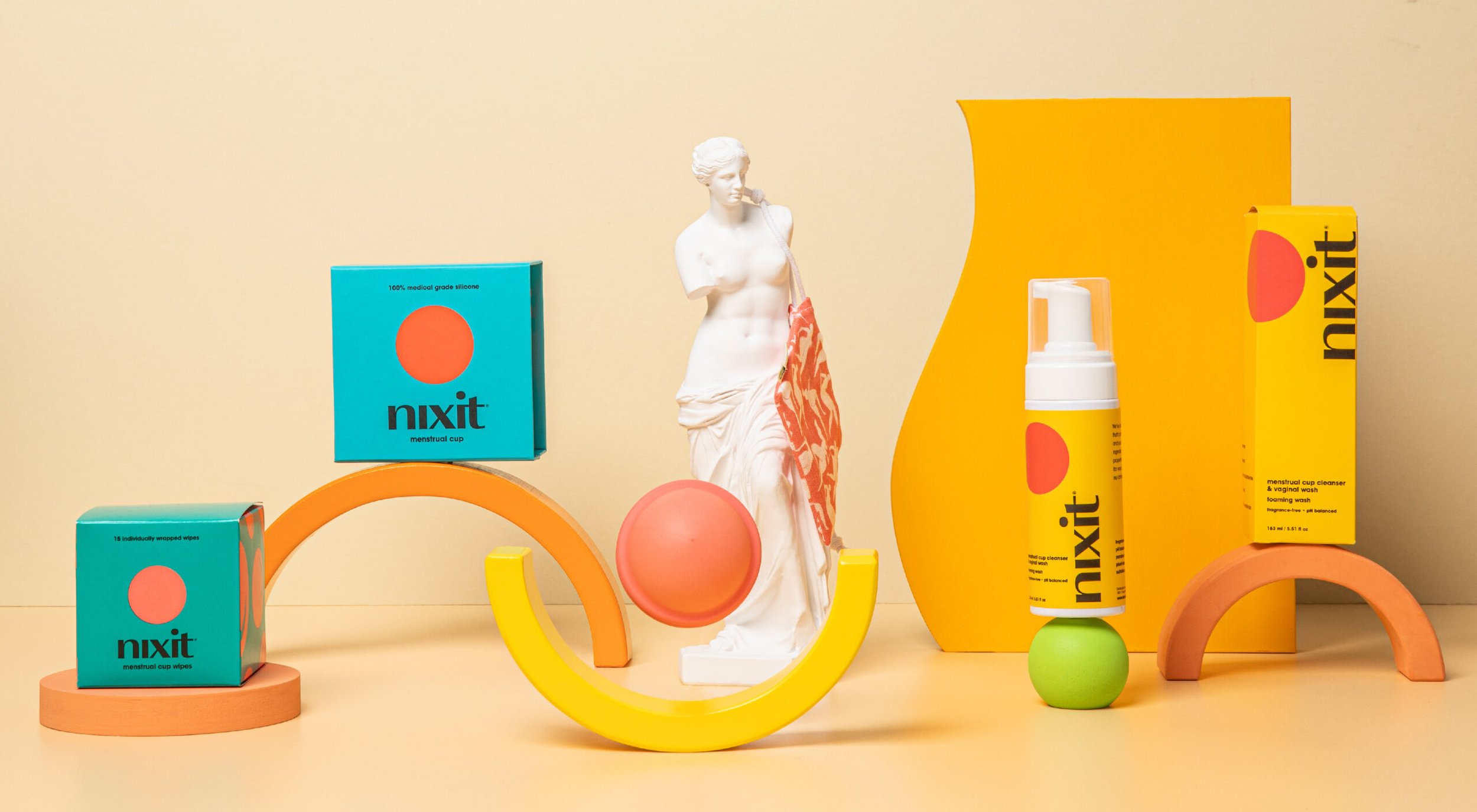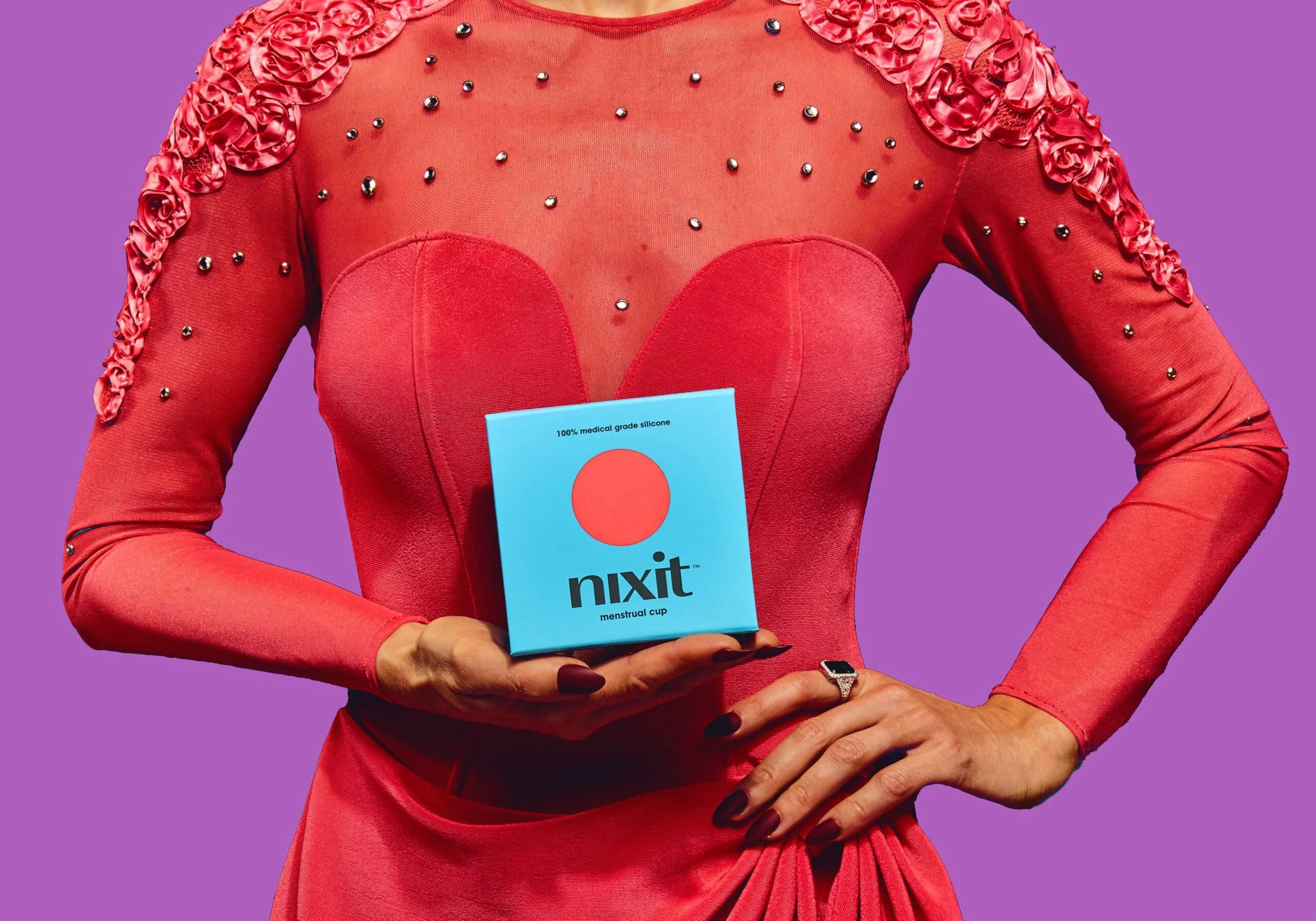How Rachael Newton Created a Sustainable Period Brand that Fights Menstrual Stigma
“Tampons take about 500 years to degrade, so I just had this image in my head of my great grandchildren still being on the earth and my tampons sitting somewhere in a landfill.”
Nixit founder Rachael Newton. Supplied photo.
The first time Rachael Newton learned about periods, she was told that tampons were forbidden until marriage. Newton, whose mother was born in Malaysia, was a midwife. But even so, “there was still this idea in her head of virginity and purity and that being broken by a tampon somehow,” Newton says. Despite her mom’s reservations, Newton was a swimmer growing up and decided to use tampons when she first got her period. “I don’t think [my mom] was pleased, but it wasn’t something we discussed.”
Years later, as an adult, Newton was living in the Caribbean with her husband and young kids. The island they lived on didn’t have recycling, so all the waste went into one massive pile. Seeing all that trash made Newton reflect on the amount of waste created by her periods. “I was a tampon user, and I realized that, on average, you use 11,000 tampons in your lifetime,” she says. “They take about 500 years to degrade, so I just had this image in my head of my great grandchildren still being on the earth and my tampons sitting somewhere in a landfill.” At that moment, she knew she needed to make a change.
Nixit products. Photo: Nixit.
First, Newton experimented with menstrual cups. Traditional cups are shaped, well, like a cup with a tapered end. Typically made from silicone, the cup is inserted into the vagina and then uses suction to stay in place. It then collects menstrual blood and only needs to be emptied every 12 or so hours.
While Newton liked that cups were reusable, she had trouble picking out the right size and shape for her, especially post-partum. But then she remembered a friend of hers who introduced her to contraceptive diaphragms, which covers the cervix. Inspired by diaphragms and other traditional cups, she started Nixit and began creating a disc-like menstrual cup. Setting in the same spot as a diaphragm, Nixit’s menstrual cup is one-size-fits-all and doesn’t require suction to stay in place which makes it easier to remove.
Aside from the shape and design of her menstrual cups, Newton also wanted to take a different approach to Nixit’s branding and packaging. A lot of the other period products on the market are too flowery, Newton explains. “We wanted sexual wellness to be bold and bright and get people excited.” So the boxes are modelled after an iPhone’s box, to simulate that multi-step unboxing joy.
Newton wanted monthly Nixit use to be a loud and bold celebration, antithetical to the quiet shame that periods typically elicit. Having grown up in cultures and societies—both Asian and western—that see periods as something to keep quiet, Newton wanted Nixit to push the period conversation forward. Part of that has to do with the ability to actually see and touch one’s menstrual blood when using a cup. “You do get blood on your fingers, and you do understand what your flow is like,” she says. It’s a journey that, for her, was empowering. “I was like, wow, my body is capable of so much.”
Plus, getting to know your period can keep you healthy. Menstrual blood is a great market of health, and being able to see changes might mean being able to alert a doctor earlier. It’s something you can’t do when the blood is absorbed by a tampon or pad.
Nixit’s menstrual cup. Photo: Nixit.
Aside from packaging, Newton says that Nixit does a lot of work through their social media to communicate to young girls and women about health periods. It doesn’t necessarily mean pointing them towards a Nixit product, or even a menstrual cup. It’s about “empowering them to make the decision that’s right for their bodies and to not feel any shame about the product they’ve chosen.”
For Newton, getting that massage across is of the utmost importance to her — partly because of her mom’s judgement. “My mom was the person I respected the most, who gave me advice and told me what to do,” she says. “So it felt like letting her down, using a tampon that first period.” But today, there is so much more openness around discussing periods and women’s bodies, Newton adds. “We want to be a resource for everyone.”



